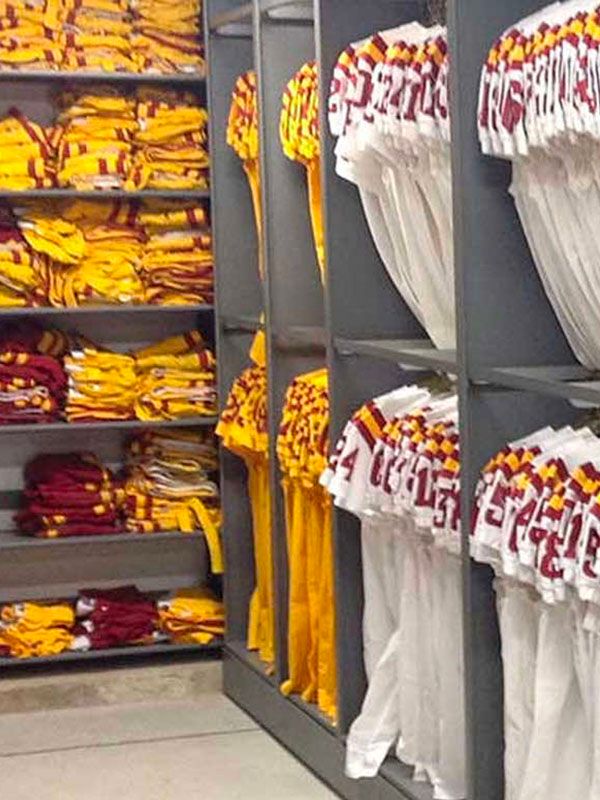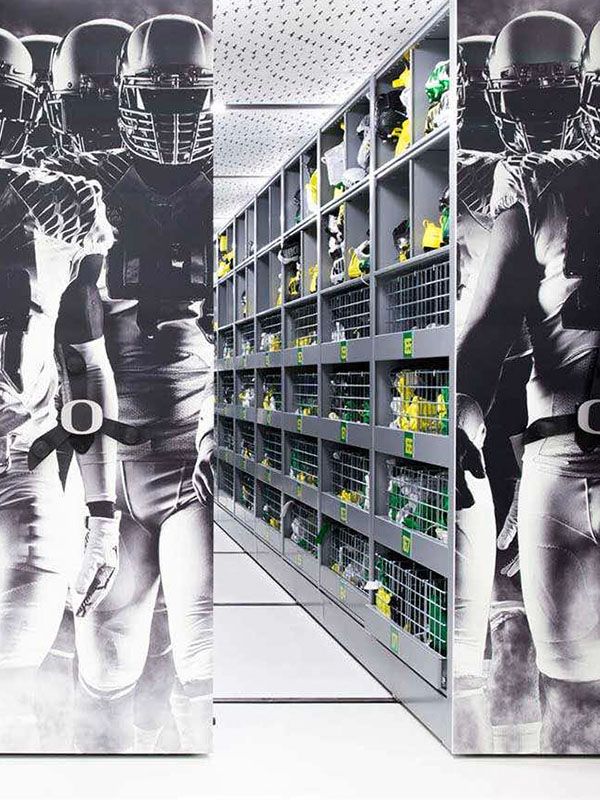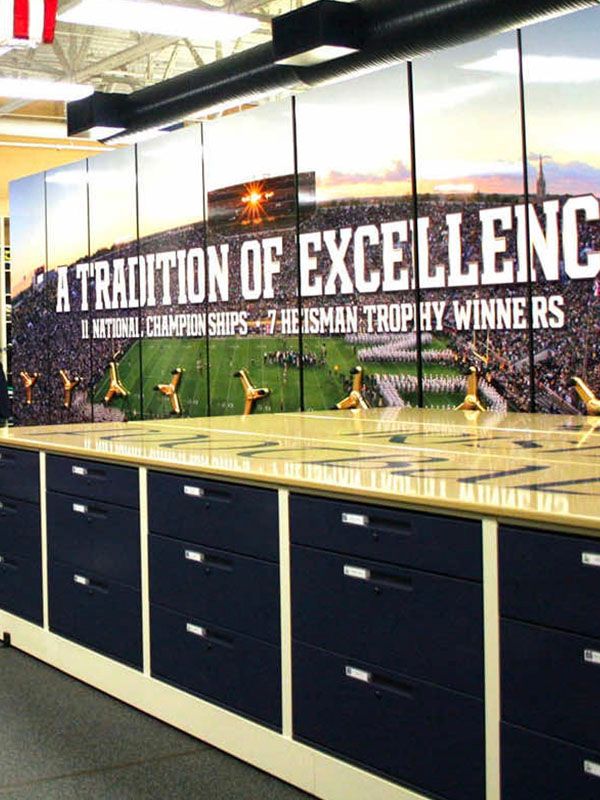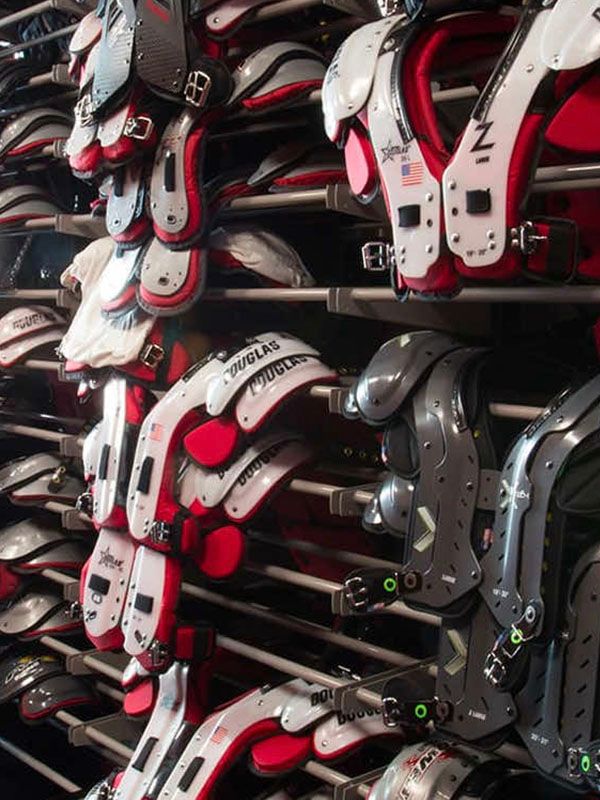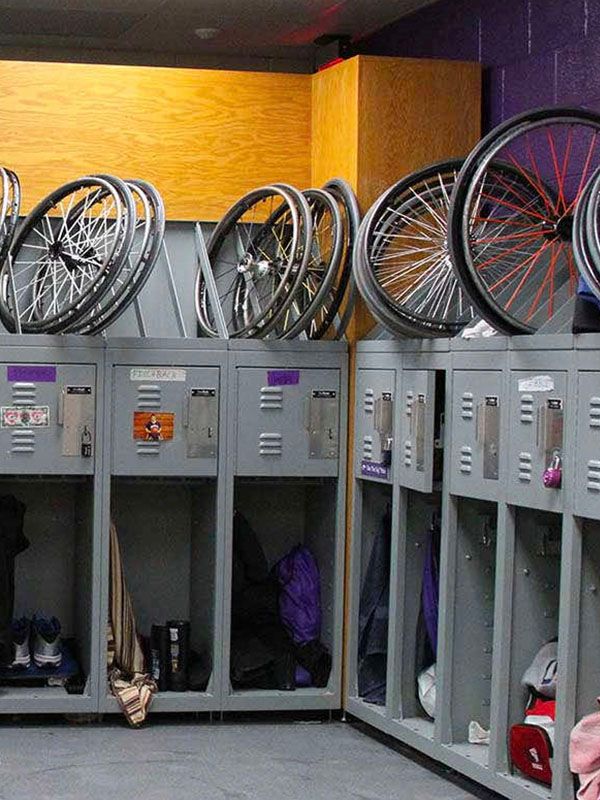Pullman, Washington
Spacesaver & Washington State, A Winning Team
Design ideas for football equipment room storage featuring Washington State University's new equipment room.
When Joshua Pietz, the Football Equipment Manager at Washington State University, set out to redesign a new football equipment room for the university, he had two main goals:
- Support the coaches and the players
- Create a showplace for recruitment
Pietz started working for the program when he was a student, and after more than 20 years at the facility he had done his best to create a well-organized system to store apparel and equipment. But despite his efforts, the program’s storage solutions were less than ideal, particularly because the football team had to share storage areas with 16 other sports.
"Our job here is to provide the coaches, the players, the staff with the things they need to accomplish their goals."
- Joshua Pietz, Football Equipment Manager for Washington State University
There was no single storage area large enough to accommodate everything that the players and coaches needed. Apparel, gear, and equipment were stored on cabinets and in trunks in several different rooms, making it difficult for anyone to keep track of all the items that the players and coaches relied on. Even if they knew where an item was, Pietz and his staff often discovered there were several other items stacked in front of it or on top of it. “If you needed to get to one thing, you had to do four things,” he said. “That was the struggle before.”
For years he had been hoping for a new equipment room. When he traveled with the team he would check out other teams’ rooms, take photos and notes, and add to his mental picture of the ideal space.
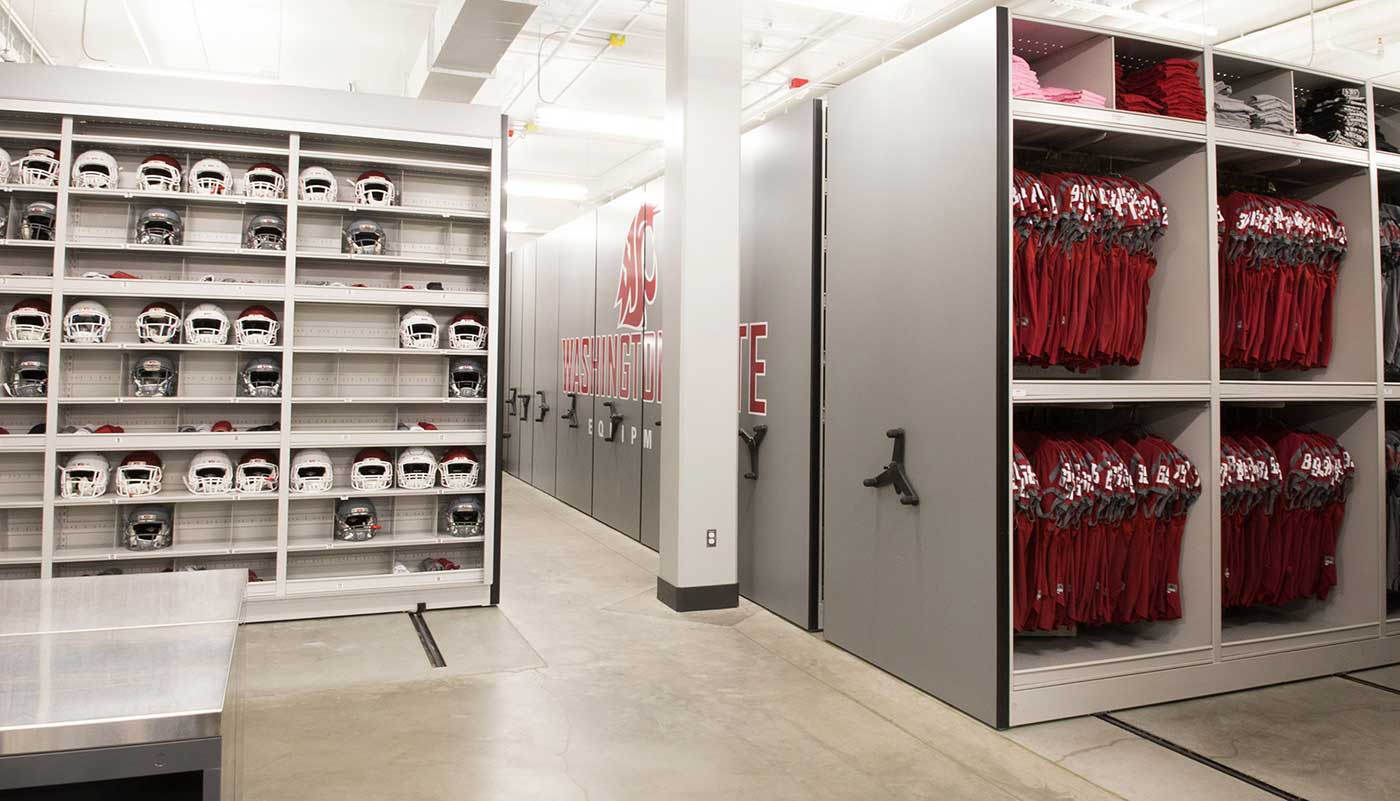
The local Spacesaver consultant met with Pietz about 15 times during the project design phase.
The Design Process
When Pietz got word that funding had come through for a new football facility at WSU, he already knew that he wanted Spacesaver compact storage systems for the equipment room. These storage systems eliminate wasted aisle space: the shelves move along rails, so they can be stored close together and dynamic aisles can be easily opened at the point of need. Pietz had seen them at a number of other universities.
Soon after he got word that funding had been acquired, Pietz contacted the local Spacesaver consultant to start discussing options. They met about fifteen times, for a couple of hours each time, over the course of planning the project. First they sat down and looked at photos of other football equipment rooms that had been designed and installed by Spacesaver, including the Seattle Seahawks, Notre Dame, and Baylor University, and they looked at photos that Josh had taken of other teams’ athletic equipment storage areas on his travels.
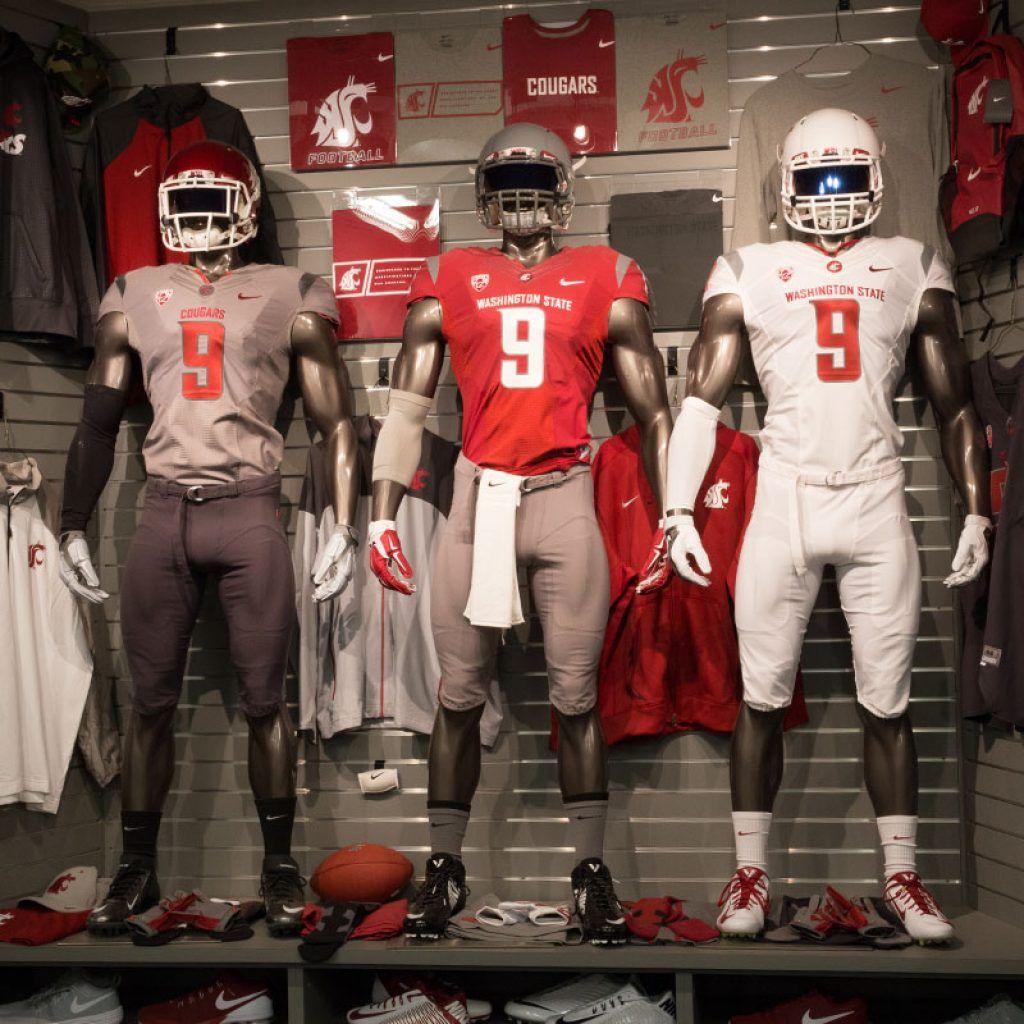
Once they had an idea of various systems and layouts, they discussed the specifics of Pietz’s staff’s workflow. They assembled the best ideas to create a general concept. When they got the final drawings from the architect regarding ceiling heights, support column placement, and other specifications, they really started digging into the details: measuring helmets, shoe boxes, jackets, figuring out exactly how wide and how tall specific items were. Then they started deciding what would go where and how the shelving units could be configured to accommodate clothing and gear in a way that would facilitate ease of use and efficient use of space.
Throughout the process the Spacesaver consultant worked with Pietz and his team, as well as with the architect, to be sure that plans and expectations were in alignment. For instance, since Spacesaver rails can be installed in new construction when the floor is poured, the Spacesaver consultant needed to work with the architect and coordinate with the contractor to be sure the rail installation process could proceed as planned. “He made sure I got what I wanted and he made sure they got what they needed,” Pietz said of the consultant.
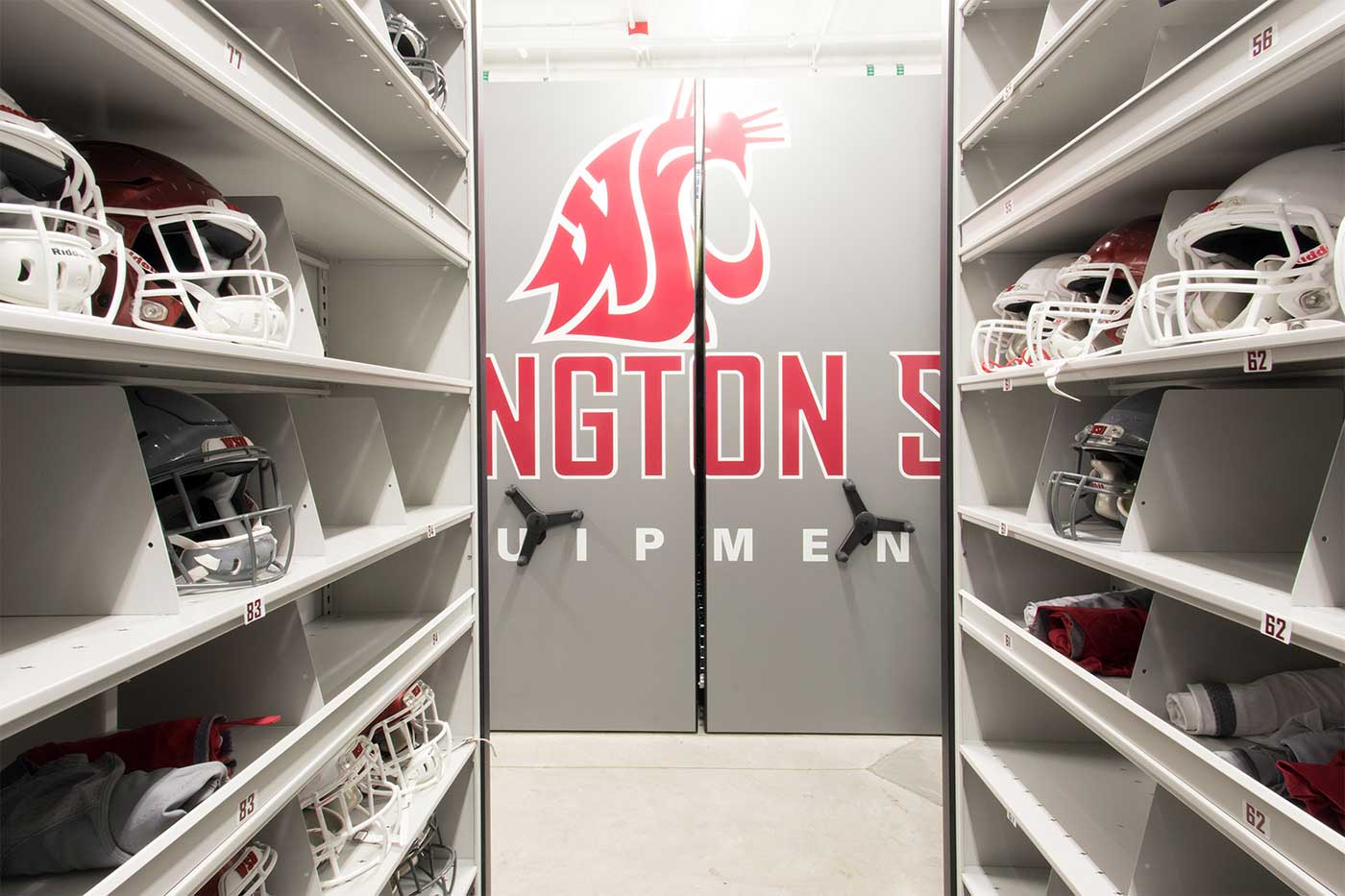
"We can accomplish our goals much faster and in a more organized manner, simply because of storage space."
- Joshua Pietz, Football Equipment Manager for Washington State University
Perfectly sized storage
The room is anchored by two large Spacesaver systems. One contains longer-term storage for spare practice items like helmets, extra shoes, and balls. It also stores less frequently used items like the players’ sideline coats and general promotional apparel. The other system contains game day storage grouped by player and coach. Both units are secured by Rollok doors, which roll down and lock to prevent unauthorized access to the shelving on each end.
The new football equipment storage room offers the following advantages:
Quick Retrieval
Staff can quickly find and retrieve items on a moment’s notice, which helps the whole team function better. “Our job here is to provide the coaches, the players, the staff with the things they need to accomplish their goals, which are to coach or get people healthy or make people stronger,” Pietz said. “We can accomplish our goals much faster and in a more organized manner, simply because of storage space.” If a coach or player requests an item, Pietz or his staff can deliver it within minutes and get them on their way.
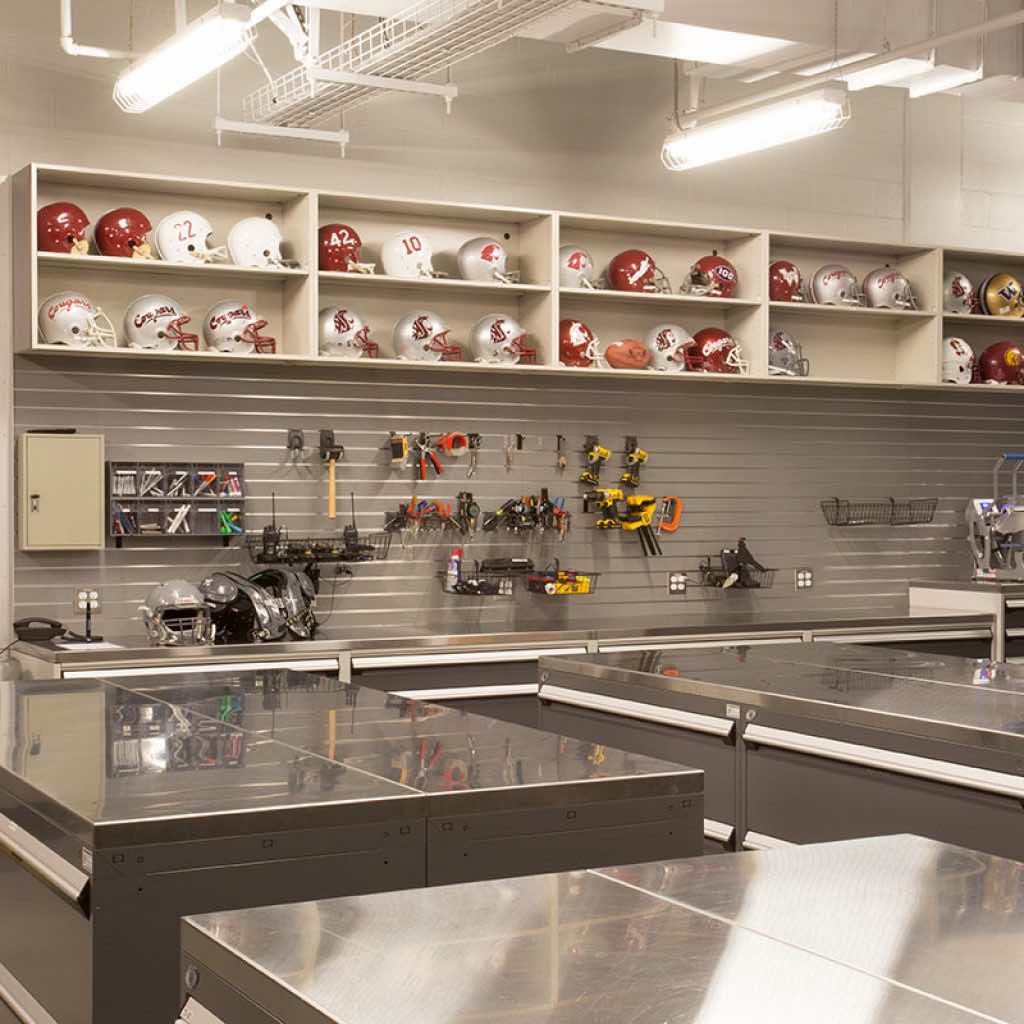
Storage Playbook
Storage Playbook

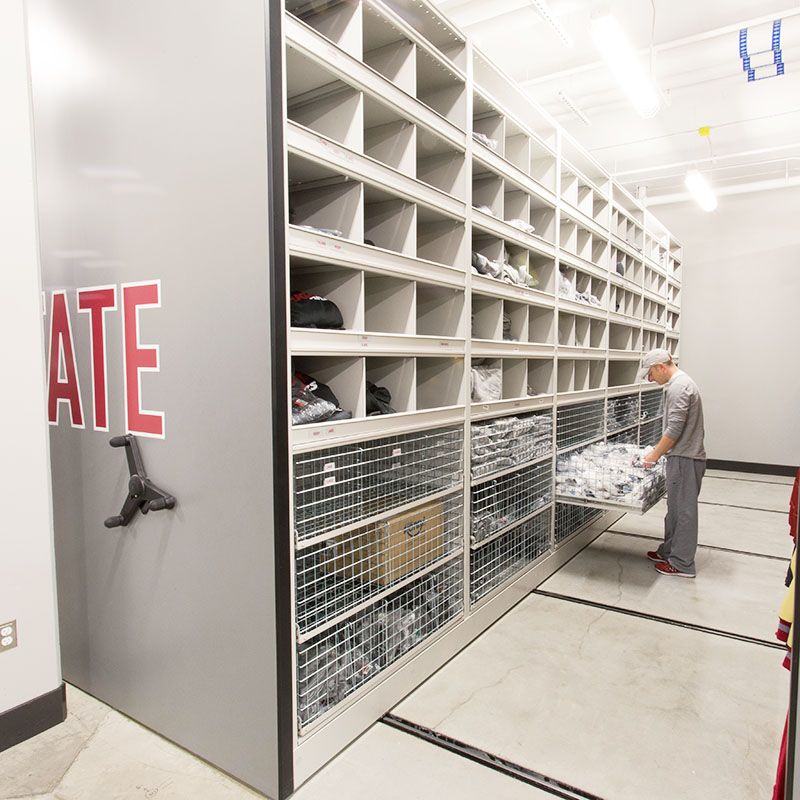
Easy Inventory
Stainless steel counters at the front of the room allow for easy inventory — when a shipment is delivered, Pietz or his staff log the items into the electronic inventory system using mobile devices or the computer that’s set up on the counter. Then the items are placed into storage. Having everything in one place makes it easy to double-check the electronic inventory system. When placing an add-on order for a specific model of a glove or shirt, for example, Pietz can quickly count the number of items left. “Inventory is always better when you’re organized,” Pietz said. “I can go count it at any time, because I know where it is. It just makes my life easier.” Given the fact that he has 11 student managers, good organization is even more important: A logical, well labeled system keeps everyone on the same page and makes their lives easier, too.
A Flexible, Configurable System
The team just completed their second season in the new facility, and Pietz says he and the staff have configured it perfectly. “It took us a full year to get things exactly the way we wanted it,” he said, adding that they refined the shelving units’ configuration after the first season. “You get in and work with it and you realize ‘That should go over here,’ or ‘I need more space for this.’ What’s nice about the configuration is you can switch it. Now it’s dialed in, so everything is where it’s gonna be for a while.”
Recruiting
One of main goals was to create a showcase for recruiting purposes. A recruit wall displays jerseys and gear that’s issued to the players. And the entire room is designed so prospective players can walk around and look into the Spacesaver units to see how much equipment will be at their disposal.
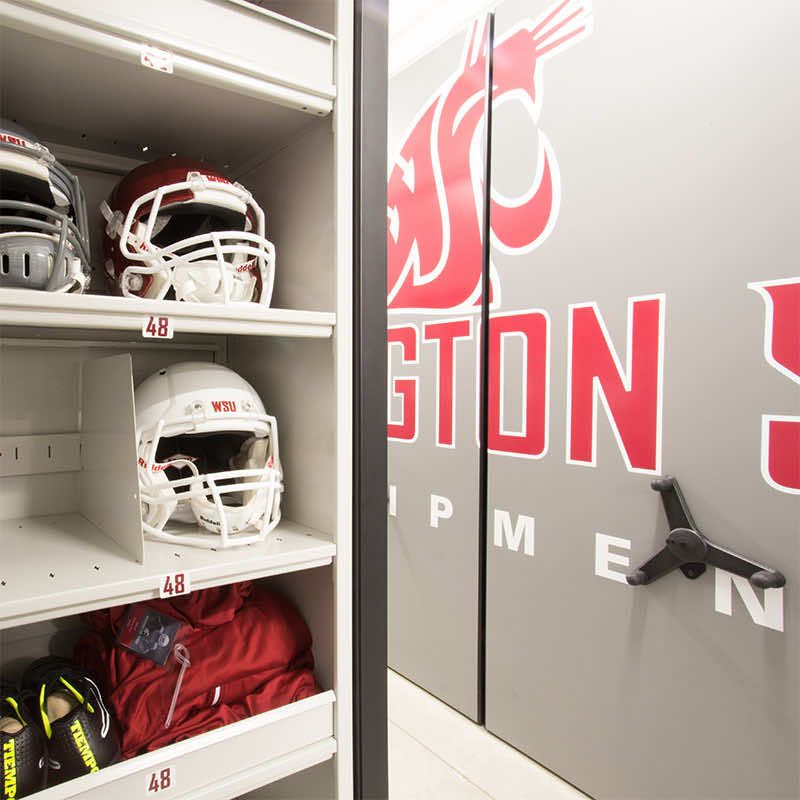
Fast Access to Everything you Need
Well-organized storage systems ensure that athletes and coaches have everything they need to protect valuable assets, streamline workflows and boost team pride.
Fast Access to Everything you Need
Well-organized storage systems ensure that athletes and coaches have everything they need to protect valuable assets, streamline workflows and boost team pride.

Words of Wisdom
Not everyone has a new 7,000 square-foot room to design for their sports team storage area. Some equipment managers might be looking at a renovation of their existing space or even a minor revamp of one small area. No matter the situation, local Spacesaver design consultants can help make the most of your space and your budget.
Pietz offers these words of advice to other equipment managers who are renovating their current football equipment room storage or designing a new room or area: “Make sure it works for you. We all have different amounts of space available and we all have different ways of working. My design was to maximize the space, and maximize the flow of the room using the Spacesavers and all the drawers. Take your time, investigate other equipment rooms, but ultimately design something that works for you.”


